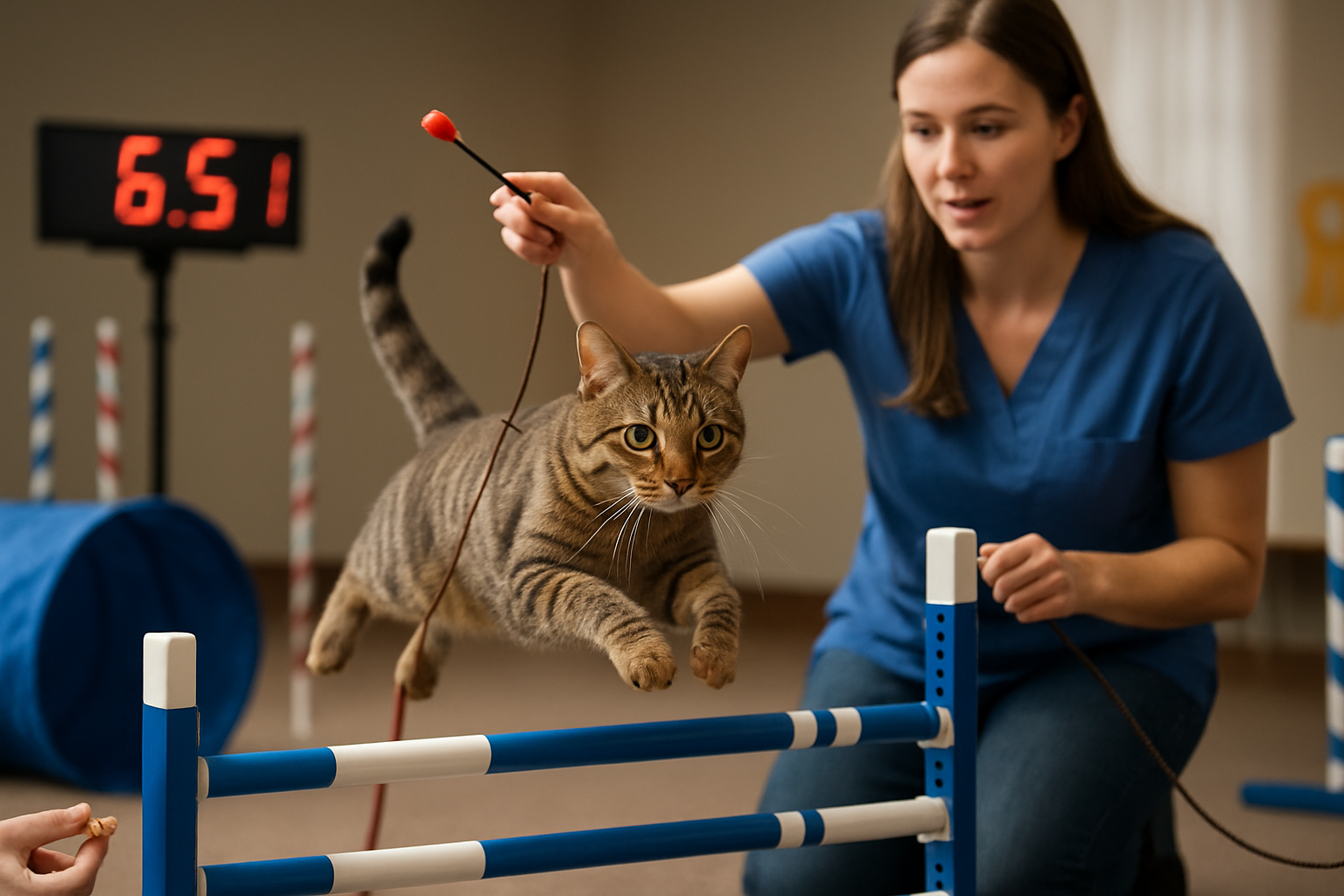Paw-some Precision: The Astonishing World of Feline Agility Competitions
In the realm of competitive pet sports, a new contender is clawing its way to the top. Feline agility competitions, once a niche pursuit, are now captivating audiences and challenging the notion that cats are too independent for organized events. This growing phenomenon is redefining the boundaries of feline athleticism and human-cat partnerships.

The Origins of Feline Agility
Feline agility competitions trace their roots back to the early 2000s when cat enthusiasts sought to create an event that would showcase the natural athleticism of their pets. Inspired by canine agility trials, these pioneers adapted obstacle courses to suit feline abilities and preferences. The first official feline agility competition was held in 2003 at a cat show in Portland, Oregon, marking the birth of a new competitive sport.
Initially met with skepticism, feline agility quickly gained traction among cat owners and spectators alike. The sport’s appeal lies in its ability to tap into cats’ natural behaviors, such as climbing, jumping, and navigating tight spaces. As word spread, more cat shows began incorporating agility events, leading to the formation of dedicated feline agility organizations and standardized rules.
The Mechanics of Feline Agility
A typical feline agility course consists of various obstacles designed to test a cat’s speed, coordination, and problem-solving skills. Obstacles may include hurdles, weave poles, tunnels, hoops, and raised walkways. Cats are timed as they navigate the course, with penalties incurred for missed obstacles or going off-course.
What sets feline agility apart from its canine counterpart is the absence of verbal commands. While dogs rely heavily on their handlers’ cues, cats must be motivated to complete the course using toys or treats. This unique aspect highlights the independent nature of cats and adds an element of unpredictability to competitions.
Training Techniques and Challenges
Training a cat for agility competitions requires patience, creativity, and a deep understanding of feline behavior. Unlike dogs, cats are not naturally inclined to follow commands or perform tricks for praise alone. Successful trainers use positive reinforcement techniques, often incorporating clicker training and high-value rewards to motivate their feline athletes.
One of the biggest challenges in feline agility training is maintaining a cat’s interest. Sessions are typically kept short, often lasting no more than 5-10 minutes, to prevent boredom or frustration. Trainers must also be adept at reading their cat’s body language and moods, knowing when to push for more and when to end a session on a positive note.
The Rise of Feline Agility Stars
As the sport has grown, so too have its stars. Cats like Twyla, a Bengal from California, have become household names in the feline agility world. Twyla holds multiple records, including completing a standard course in under 10 seconds – a feat that has earned her the nickname “The Feline Flash.”
These feline celebrities are not only raising the profile of the sport but also challenging long-held beliefs about cat behavior and training. Their success stories inspire cat owners to engage more actively with their pets, leading to stronger bonds and healthier, more stimulated cats.
Impact on the Pet Industry
The growing popularity of feline agility has had a significant impact on the pet industry. Manufacturers have responded to the demand for specialized agility equipment, creating a new market for cat-specific obstacle courses and training tools. Prices for these products can range from $50 for basic starter kits to over $500 for professional-grade setups.
Beyond equipment, the sport has influenced cat food and treat formulations, with brands developing products tailored to the nutritional needs of active felines. Veterinary care has also evolved, with an increased focus on feline fitness and sports medicine to support these athletic cats.
Health Benefits for Feline Participants
Participation in agility training and competitions offers numerous health benefits for cats. Regular physical activity helps maintain a healthy weight, improves cardiovascular health, and enhances muscle tone and flexibility. The mental stimulation provided by agility training can also reduce stress and behavioral problems in cats, leading to overall improved well-being.
Veterinarians specializing in feline health have noted decreased incidents of obesity-related diseases and improved mental health in cats that regularly engage in agility activities. This has led to some veterinary practices recommending agility training as part of a holistic approach to feline healthcare.
The Future of Feline Agility
As feline agility continues to grow in popularity, the sport is poised for further evolution. International competitions are becoming more common, with talks of potentially including feline agility as a demonstration sport in major pet expos and events. Technology is also playing a role, with some organizers experimenting with live-streaming competitions and developing apps for at-home training.
The future may see the emergence of breed-specific categories, advanced scoring systems, and even multi-cat team events. As the sport matures, it continues to challenge our understanding of feline capabilities and the depth of the human-cat bond.
Conclusion
Feline agility competitions represent a fascinating intersection of natural feline behavior, human ingenuity, and the ever-evolving relationship between cats and their owners. As this sport continues to gain momentum, it not only provides entertainment but also offers valuable insights into feline psychology and physical capabilities. For cat enthusiasts and casual observers alike, the world of feline agility is a testament to the untapped potential of our feline companions and the endless possibilities that arise when we think outside the litter box.





